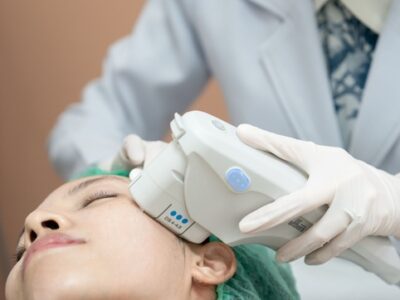
Introduction
Lung cancer affects millions of people every year, and while it is more common in smokers, non-smokers are also at risk. Knowing the early signs of lung cancer can lead to quicker diagnosis, giving patients a better chance at effective treatment. This article will highlight five early signs of lung cancer and cover the steps involved in diagnosis and treatment.
What Is Lung Cancer?
Lung cancer occurs when abnormal cells in the lungs grow uncontrollably, forming tumors that interfere with lung function. There are two main types of lung cancer:
Non-small cell lung cancer (NSCLC): The most common form, making up about 85% of cases.
Small cell lung cancer (SCLC): A more aggressive and rapidly spreading type, accounting for around 15% of cases.
Risk Factors
Some factors increase the likelihood of developing lung cancer, including:
- Smoking and second-hand smoke exposure
- Exposure to radon gas
- Occupational hazards (e.g., asbestos exposure)
- Family history of lung cancer
- Air pollution
Early Warning Signs of Lung Cancer
Lung cancer symptoms can often be mistaken for less serious conditions. However, recognizing the following early signs is crucial for seeking timely medical attention
1-Persistent Cough
A lingering cough that doesn’t go away after a few weeks, or worsens over time, can be an early indicator of lung cancer. It may start as a dry cough but eventually become productive, producing mucus or even blood.
2-Shortness of Breath
If you find yourself getting winded during everyday activities that you could previously manage, it could be a sign that a lung tumor is blocking airflow. Shortness of breath is a common early symptom of lung cancer.
3-Chest Pain
Lung cancer can cause discomfort or pain in the chest, shoulders, or back. The pain might intensify when you laugh, cough, or take deep breaths, and it’s often a sign of tumors growing in the lungs or nearby areas.
4-Unexplained Weight Loss
Losing weight without changing your diet or exercise routine could be a red flag. Cancer cells can use up more of your body’s energy, causing weight loss even when you’re not trying to shed pounds.
5-Hoarseness or Voice Changes
Changes in your voice, such as becoming hoarse or sounding deeper, can indicate lung cancer if a tumor is pressing on the nerves that control your vocal cords. This symptom can sometimes be mistaken for other conditions, like a cold or allergies, but if it persists, it’s worth checking out.
Why Early Detection Is Crucial
Early detection of lung cancer is vital because the earlier the disease is caught, the higher the chances of successful treatment. In the early stages, lung cancer may be treated more effectively with surgery or localized therapy, while more advanced stages often require aggressive treatments like chemotherapy or radiation.
How Lung Cancer Is Diagnosed
Imaging Tests
To diagnose lung cancer, doctors often begin with imaging tests such as:
- Chest X-ray: A simple and quick test that can reveal abnormal masses in the lungs.
- CT scan: Provides a more detailed image of the lungs and can detect smaller tumors that may not appear on an X-ray.
Biopsy and Tissue Sampling
If a suspicious mass is found, a biopsy may be performed to collect a sample of the tissue for examination. This helps confirm whether the mass is cancerous and determines the type and stage of lung cancer.
Staging of Lung Cancer
The Different Stages of Lung Cancer
Lung cancer is divided into stages, which describe the extent to which the cancer has spread:
- Stage 1: Cancer is confined to the lungs and has not spread to nearby lymph nodes.
- Stage 2 and 3: The cancer has spread to nearby tissues or lymph nodes.
- Stage 4: Cancer has spread to other parts of the body, such as the brain, bones, or liver.
Importance of Staging in Treatment
The stage of lung cancer plays a critical role in determining the treatment approach. Early-stage lung cancer may be treated with surgery, while advanced stages typically require a combination of therapies.
Treatment Options for Lung Cancer
Surgery
For early-stage lung cancer, surgery may be recommended to remove the tumor. Types of surgery include:
- Lobectomy: Removing one of the lobes of the lung.
- Pneumonectomy: Removing an entire lung.
- Segmentectomy: Removing a smaller portion of the lung.
Radiation Therapy
Radiation uses high-energy rays to kill cancer cells. It’s often used in combination with surgery or chemotherapy, or as a standalone treatment in cases where surgery isn’t an option.
Chemotherapy
Chemotherapy uses drugs to destroy cancer cells. It’s a common treatment for both early and advanced lung cancer and is often used alongside radiation therapy.
Targeted Therapy
Targeted therapy uses drugs that specifically target the cancer cells’ genes or proteins, causing less damage to normal cells. This option is most effective in patients whose cancer has specific genetic mutations.
Managing Side Effects of Lung Cancer Treatment
Cancer treatment can cause side effects like fatigue, nausea, and hair loss. Managing these side effects with supportive care and working closely with your healthcare team can improve your quality of life during treatment.
Lifestyle Changes After Lung Cancer Diagnosis
Making healthy lifestyle choices, such as quitting smoking, eating a nutritious diet, and staying active, can help manage lung cancer and improve treatment outcomes. Reducing stress and staying mentally strong are also important aspects of the recovery process.
Preventing Lung Cancer: Risk Reduction Tips
While some risk factors for lung cancer are beyond your control, others can be minimized:
- Quit smoking: If you smoke, quitting is the most significant step you can take to reduce your risk.
- Avoid second-hand smoke: Keep away from environments where smoking occurs.
- Test for radon: Ensure your home is free of radon gas, a leading cause of lung cancer in non-smokers.
- Wear protective gear at work: If you’re exposed to harmful chemicals, such as asbestos, use the appropriate protective gear.
Conclusion
Lung cancer is a serious condition, but catching it early can improve the chances of successful treatment. Knowing the early signs, such as a persistent cough, chest pain, and unexplained weight loss, can help you take action sooner rather than later. If you or a loved one are experiencing any of these symptoms, seek medical advice as soon as possible. Remember, early detection can save lives.
FAQs About Lung Cancer Diagnosis and Treatment
What is the most common early sign of lung cancer?
A persistent cough that doesn’t go away is one of the most common early signs.
Can non-smokers get lung cancer?
Yes, while smoking is a major risk factor, non-smokers can also develop lung cancer due to factors like radon exposure or family history.
How is lung cancer diagnosed?
Lung cancer is diagnosed through imaging tests like X-rays and CT scans, followed by a biopsy to confirm the diagnosis.
What are the treatment options for lung cancer?
Treatment options include surgery, chemotherapy, radiation therapy, and targeted therapies.
Can lung cancer be prevented?
While not all cases can be prevented, quitting smoking, avoiding second-hand smoke, and testing for radon can significantly lower your risk.










